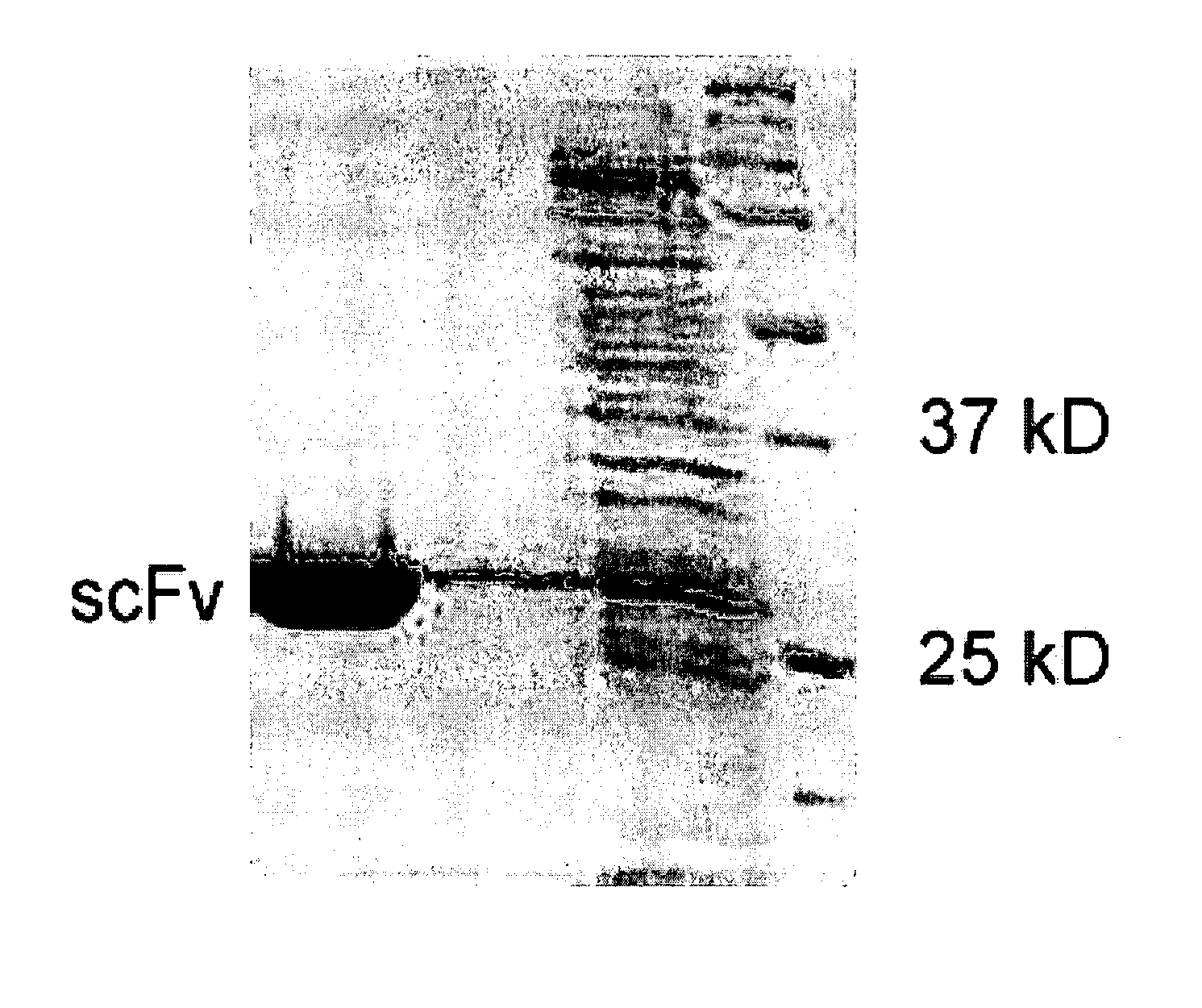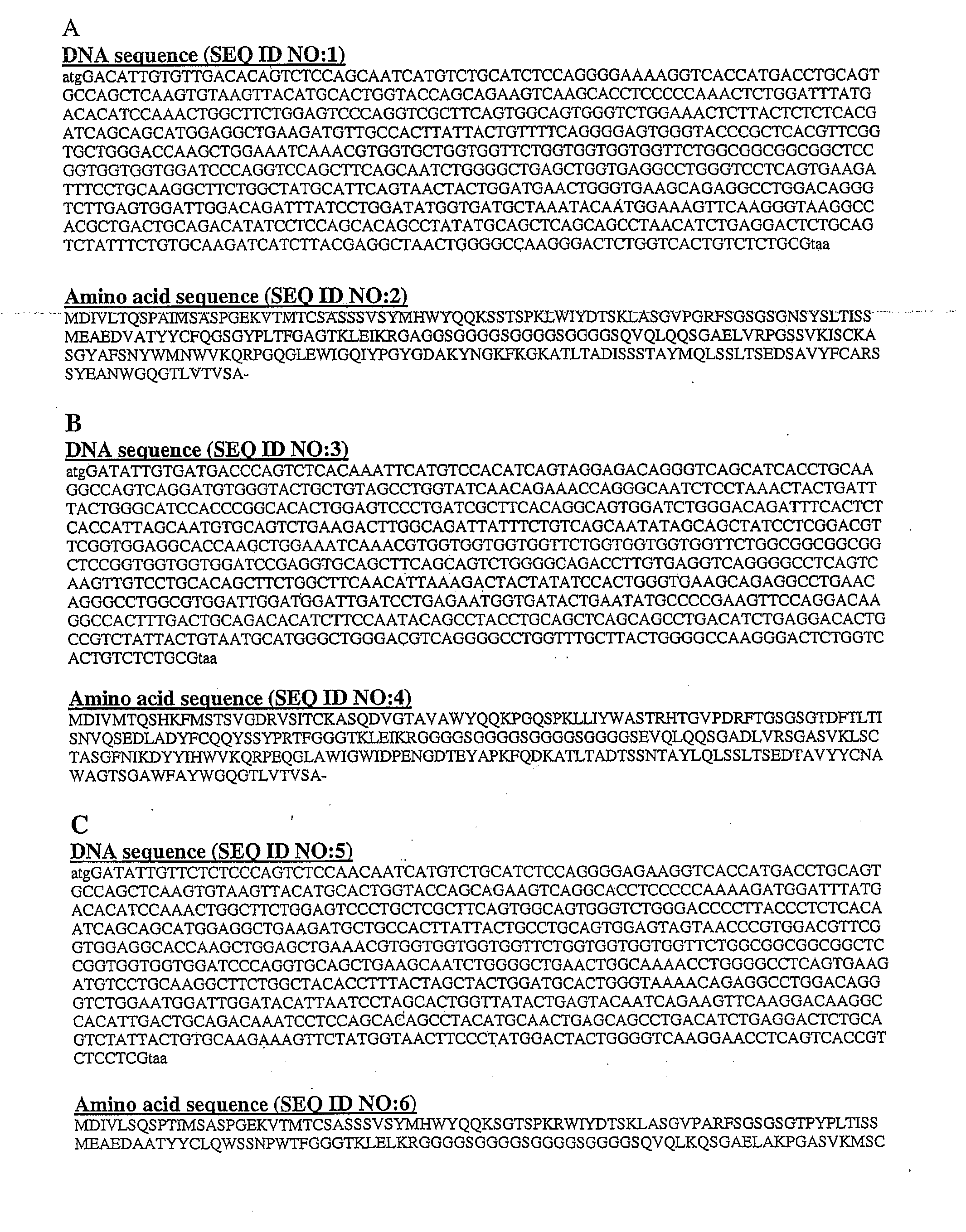Recombinant antibodies to sclerotinia antigens
a technology of sclerotinia and sclerotinia, which is applied in the field of recombinant antibodies to sclerotinia antigens, can solve the problems that no such approach has been used to target sspg1d, aspartyl protease or fungal mycelia to reduce the pathogenicity of this fungus
- Summary
- Abstract
- Description
- Claims
- Application Information
AI Technical Summary
Benefits of technology
Problems solved by technology
Method used
Image
Examples
examples
[0075] The present invention is described in the following Examples, which are set forth to aid in the understanding of the invention, and should not be construed to limit in any way the scope of the invention as defined in the claims which follow thereafter.
[0076] ScFv Construction and Selection:
[0077] In order to synthesize the single chain variable fragment (scFv) antibodies, gene fragments from antibodies that can specifically recognize four chosen antigens of interest (i.e. SSPG1d peptide, whole SSPG1d, aspartyl protease peptide and whole S. sclerotiorum mycelium) were prepared using the well-established protocol involving the immunization of mice with the four target antigens and the isolation of the antibody-producing spleen cells was utilized. Peptide sequences from the SSPG1d endopolygalacturonase (NGSPTGKPTSGVPI) (SEQ ID NO: 41) and aspartyl protease (MTMDFDSGSSDLWS) (SEQ ID NO: 42) that were predicted to be antigenic based on hydrophobicity plots were synthesized at the...
PUM
| Property | Measurement | Unit |
|---|---|---|
| Fraction | aaaaa | aaaaa |
Abstract
Description
Claims
Application Information
 Login to View More
Login to View More - R&D
- Intellectual Property
- Life Sciences
- Materials
- Tech Scout
- Unparalleled Data Quality
- Higher Quality Content
- 60% Fewer Hallucinations
Browse by: Latest US Patents, China's latest patents, Technical Efficacy Thesaurus, Application Domain, Technology Topic, Popular Technical Reports.
© 2025 PatSnap. All rights reserved.Legal|Privacy policy|Modern Slavery Act Transparency Statement|Sitemap|About US| Contact US: help@patsnap.com



